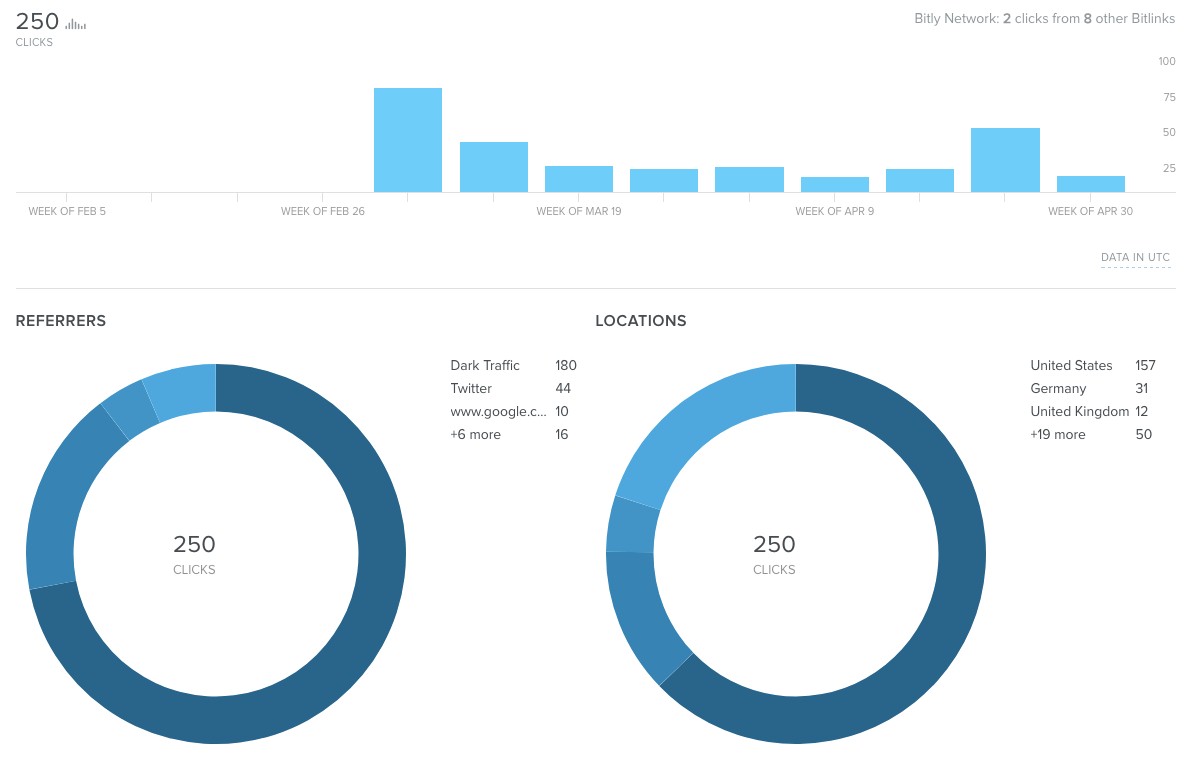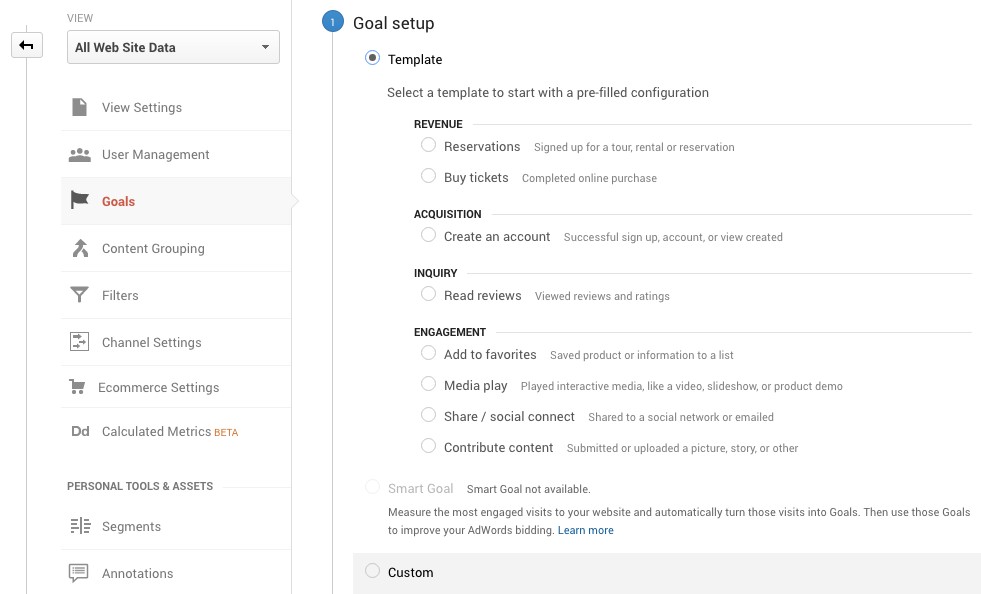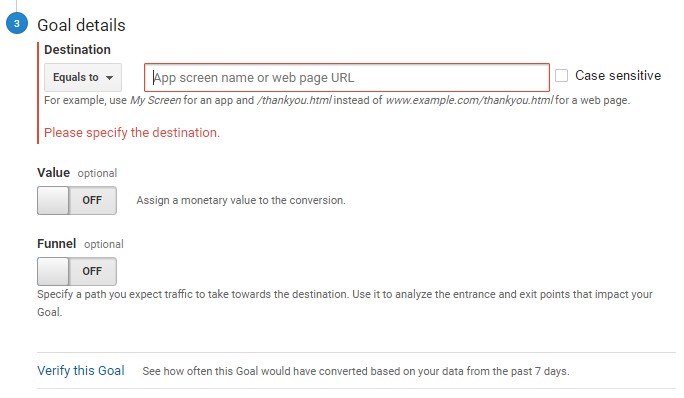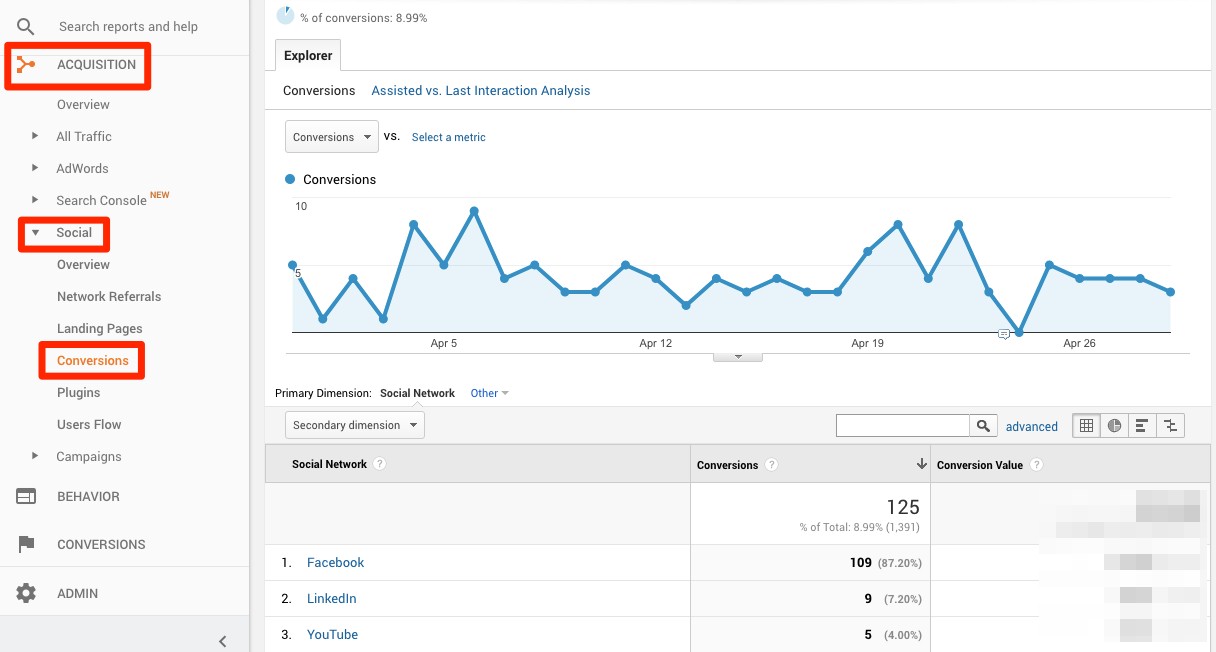Which social media marketing tactics are the most effective for you? If you aren’t sure about the answer, you aren’t alone. According to the most recent Social Media Marketing Industry Report from Social Media Examiner, this is the most pressing question that 92% of marketers face.
Why is it such a mystery? Many companies simply fail to track the right social media metrics. This results in a badly planned strategy that brings in abysmal ROI. (By the way, the same survey found that 86% of marketers are still trying to figure out how best to measure their social media ROI.)
Measuring the right social media metrics can be tricky. Ask a roomful of marketing experts which metrics are most important, and you will get at least as many different responses. Now, the biggest issue here is not how to tweak and experiment, but what metrics are actually useful.

Simply put, you want to focus on the data that helps you move your prospects down your sales funnel – from audience to leads and down to sales. Generating leads, building your credibility and brand recognition, generating sales, and creating brand promoters is not only a question of when but also how.
While there are numerous different ways to go about this, one thing that has been proven to be of tremendous value is using closed-loop analytics. Here’s my take on why you need to close the loop in your data – and how to get started.
What are Closed-Loop Analytics?
Closed-loop analytics follow the complete customer lifecycle, providing useful information throughout. We are talking about structured data that tracks activity from the first time a visitor interacts with you or your site, to the time they become your customers – and even beyond when they ideally become promoters of your brand.
Obviously, this model encompasses both marketing and sales parts of the process, and that’s where the problem lies. Usually, the marketing department is charged with generating leads and nurturing them, while the sales department pitches and seals the deal.
If we observe the simplest new sale as enabled by social media, it consists of a few stages:
●An audience member discovers you via social media and clicks through to your site
●The visitor browses your site, becoming a prospect
●The prospect fills out a form, becoming a lead
●You nurture the lead via email, social media, and on-site content
●The lead makes a purchase, and a customer is born
Now, the trick here is that marketing typically tracks the first four stages, and then subsequently turns the lead over to the sales department. After all, it would seem that after their job is done, there is no need to bother with that lead anymore.
However, wouldn’t it be a good idea if marketing could track these leads even through the fourth stage?
That way, we could see which of our efforts end up in a successful sale, and which end up in an unsuccessful deal. If we could have a look at the whole process, we could see what activities by both marketing and sales are most likely to create a customer. Or, to take it a step further, we could see which social media activities eventually lead to deals with customers who yield the most profits for your business over time.
Since the data for marketing teams comes mostly from website and social media analytics platforms, and sales information comes from CRM (customer relationship management) software, closed loop analytics can bridge the gap and greatly improve the communication between the teams.
How to Integrate Social Metrics in Closed Loop Analytics
So, closed loop requires standard marketing data collection and information from the sales end of the funnel. How does social media come into play?
Well, the first thing is that we have to free ourselves of the notion that the traditional sales funnel has remained unchanged over the past few years.
Social selling and the general focus on the digital channels have changed the game. Sure, the funnel has the same steps, but we have to go about them differently. Marketers need to track their leads not only through the final stages of the funnel, until the intent to purchase is clear, but also even beyond, we need to put an effort to delight customers and turn them into repeat buyers and promoters of our brands.
All this means that it’s more important than ever to know what to track on appropriate channels. In contemporary marketing, social metrics make for some of the most important information you can have, and leveraging social media marketing in your closed loop analytics is simply a must.
One way we can tackle these metrics is to consider what activities they are associated with:
·Consumption Metrics
How many people interacted with your social content? Post, page and video views, podcast listens, and downloads can all give insight into both your traffic and the behavior of your audience. Even better, which content assets on your website did people consume most when they clicked through from social media?

Most of these metrics can be obtained easily. For example, page views will be displayed in your Google Analytics account. In your dashboard’s left menu, you just have to click on Acquisition, then Social and then Landing Pages.
Metrics like video views and podcasts are more straightforward, as you just need to see the number displayed next to the media.

But it would be better to dive deeper into the analytics and check metrics like location and view time.
·Social Engagement Metrics
To what extent does your content resonate with your audience? If they like it and find it valuable and engaging, they will be more likely to share it, discuss it and promote it. Tallying shares, likes and comments on your posts can all be useful for tracking how useful your content is to people. In order to catalyze this, you should have conveniently placed social sharing buttons and make your content embeddable.
Basic sharing metrics like number of shares can be viewed on your website itself (if you have share buttons) or in the dashboard of your sharing button software. But to get the best results you need more advanced data, like that offered by Buzzsumo.

Tools like this can reveal not only the number of shares your content receives, but also who shared your content. You will then be able to more effectively analyze the audience that shares your content. This, in turn, helps you build better relationships with influencers who are already sharing your content, which helps to acquire more audience members at the top of the funnel.
·Lead Generation Metrics
How many leads do you get out of your content? This ideally should extend well beyond your squeeze page conversion rates. Blog subscriptions, email newsletter subscriptions, form completion, and downloads can all be used to understand what types of micro-conversions, on-site assets, and social promotions perform best at turning your audience into leads.
Email subscriptions and conversion rates can be easily tracked by viewing your landing page and email analytics. If you are using email marketing software, you will also be able to view how many leads are clicking on your in-message links. You can also track clicks by using a tool like Bitly.

Some lead-gen metrics are difficult to track – after all, not all of your content will generate leads directly. Luckily, you can tie social media posts to landing pages and measure indirect lead-gen value by seeing what pages your social referrals originally landed on before eventually converting. You can also use the secondary dimensions in your Google Analytics, as demonstrated above, to check if a specific piece of content drives disproportionate traffic to a landing page.
·Sales Metrics
Last but not least, did you make money from your content? Is your ROI good enough? The obvious metric here is order value, but you can also learn a lot by correlating referrals from specific social channels with customer lifetime value. Either way, this is the whole point of closing the loop – to track the whole path that led to these successful sales, to help you understand how the whole process can be improved.
In Google Analytics, it’s relatively easy to set and monitor specific goals. Once you’re in your dashboard, click on Admin. It should be right at the bottom of the menu on the left. Next, click on Goals. After that click, on the red +New Goal button. Google Analytics will then display a number of goals to easily set up. These range from making a payment to making an appointment to creating an account. You also have the option to set up a custom goal.

Browse through them and choose a goal template. If none of them are relevant, you can use the Custom option. Then click on the blue Continue button. Next, choose the goal description.
After that, give your goal a description in the field provided and choose a goal type. I am going to choose Destination, as I am looking to track sales. By tracking visits to my thank you page, I can see when sales conversions take place. Click on Continue again.

You will be taken to the Goal Details section. Here, add the URL of your thank you page. You can also give a monetary value to this conversion and specify a path. Finally, click on Save, and your goal will be set up.
You will now be able to analyze your goals and conversions in your Google Analytics under Conversions, and track sales metrics better. This way you can set up conversions for various things, including the generation of leads. Just make sure you create a unique thank you page for each type of goal conversion.

Choose Your Goals and Track Your Progress
This last step that is necessary to fully implement your closed loop, is to use a custom dashboard to streamline your tracking, and have all the data in one place. You can use this data together with the sales data to find correlations and find out how your marketing and sales interact.
When you have established the whole system, the only thing that remains is to create a data-gathering schedule. Whether you want to do this weekly, monthly, or quarterly, depends on what your needs are and how big and agile your company is. It’s not a bad idea to tie this schedule to your promotion cycles, or the consumption pattern of your products.
Nowadays, closed-loop analytics is not some newfangled shtick – it is simply what marketers need to track activity with the sales funnel in mind. Today we have the ability to track performance ways that weren’t possible before, and closed-loop analytics can help you improve your social media ROI.
Further reading: Essential Marketing Metrics for Agencies and Businesses
Innovative SEO services
SEO is a patience game; no secret there. We`ll work with you to develop a Search strategy focused on producing increased traffic rankings in as early as 3-months.
A proven Allinclusive. SEO services for measuring, executing, and optimizing for Search Engine success. We say what we do and do what we say.
Our company as Semrush Agency Partner has designed a search engine optimization service that is both ethical and result-driven. We use the latest tools, strategies, and trends to help you move up in the search engines for the right keywords to get noticed by the right audience.
Today, you can schedule a Discovery call with us about your company needs.
Source:




